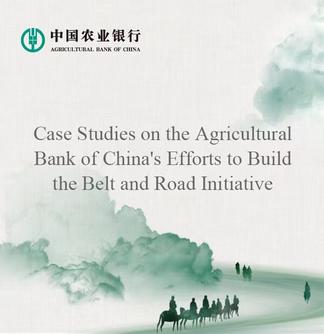Photo taken on Jan. 10, 2018 shows part of Morocco's NOOR III Concentrated Solar Power (CSP) project in Ouarzazate, Morocco. (Xinhua/Chen Binjie)
By 2024, China and the Middle East had forged dynamic cooperation in green energy, fitting the region's aspirations to diversify its economy. The partnership, spanning solar power, hydrogen production, and electric vehicles, is remoulding the region's "power" dynamics.
CAIRO, Dec. 25 (Xinhua) -- In the golden expanse of the Arabian desert where oil's dominance was unchallenged, a new source of power is taking shape: solar panels gleam under the relentless sun; wind turbines carve arcs against the sky; and electric cars hum along newly paved roads.
The scene is not a fantasy but a rapidly unfolding reality, driven by an alliance that is reshaping the Middle East's future -- its partnership with China.
By 2024, China and the Middle East had forged dynamic cooperation in green energy, fitting the region's aspirations to diversify its economy with China's expertise in renewable technologies. The partnership, spanning solar power, hydrogen production, and electric vehicles, is remoulding the region's "power" dynamics.
A SOLAR-POWERED RENAISSANCE
In the Al Dhafra desert, the world's largest single-site solar plant built by China Machinery Engineering Corporation stood as a testament to this productive partnership, delivering a staggering 2,100 MW of power, lighting up 200,000 homes in the United Arab Emirates (UAE) and cutting carbon emissions by 2.4 million tonnes annually.
The UAE is not unique in making strides in green energy across the region, where iconic projects are sprouting: the NOOR Concentrated Solar Power projects in Morocco, one of the world's largest concentrated solar farms whose second and the third phases were constructed by Chinese companies; Ibri Solar Power project, the largest renewable energy project in Oman; and the world's largest photovoltaic-energy storage microgrid on Saudi Arabia's Red Sea coast.
Adding to the momentum, Chinese giants Jinko Solar and TCL Zhonghuan announced joint ventures with Saudi Arabia's Public Investment Fund (PIF) in July 2024. With investments worth over 3 billion U.S. dollars, these projects aim to localize solar manufacturing and help translate Saudi Arabia into a global hub for renewable energy exports.
"These agreements will not only enhance local capabilities but also solidify Saudi Arabia's role in the global energy transition," a PIF statement said.
Customers negotiate to purchase Geely's electric vehicle model Geometry C in Tel Aviv, Israel, June 21, 2023. (Xinhua/Chen Junqing)
ELECTRIC DREAMS COME TRUE
While solar power is being wired to Mideast homes, Chinese-made electric vehicles (EVs) are whizzing on the roads. In Riyadh and Dubai, EVs are no longer novelties but harbingers of a dramatic change for green energy vehicles. Saudi Arabia's Vision 2030 presents a 50 billion dollar investment in EV production, with the first Saudi-made electric vehicles coming off the production line in 2025.
In the UAE, Chinese carmaker NIO, in partnership with CYVN Holdings, launched NIO MENA in October. The joint venture will introduce NIO's vehicle models and establish a research and development center focused on AI-driven technologies, notably autonomous driving.
The UAE has an ambitious vision for green mobility. In 2023, the Ministry of Energy and Infrastructure unveiled a plan to increase the share of electric and hybrid vehicles to 50 percent by 2050, and set up 10,000 charging stations by 2030 across the country.
The EV revolution is also embraced by Egypt and Türkiye, where, by 2024, Chinese automakers have either established assembly plants or formed partnerships to boost local EV production.
Chinese EV brands, such as BYD, Geely, and MG, are also gaining traction across the Middle East. In 2023, Chinese EVs accounted for about 61 percent of the EV market in Israel, a share that rose to 68.31 percent in the first half of 2024. In Jordan, 87 percent of EVs cleared from its free zone in 2023 were from China, according to the Jordan Free Zones Investor Commission. Adding to the dynamics, Dubai's Roads and Transport Authority has recently welcomed Chinese-made electric buses into its public transit network.
A Chinese electric vehicle is seen on a street in Amman, Jordan, on March 6, 2024. (Photo by Mohammad Abu Ghosh/Xinhua)
A NEW ENERGY ECOSYSTEM
On top of solar panels and EVs, China and the Middle East are working for a complete green energy ecosystem featuring hydrogen production facilities, wind farms, and hybrid renewable systems.
In October, Saudi Arabia's ACWA Power joined forces with Chinese researchers in Shanghai to pioneer advances in green hydrogen and energy storage, addressing the twin challenges of energy and water scarcity.
Lyu Yunhe, executive vice president of ACWA Power, told Xinhua that there's a "very clear complementary advantage" between Saudi Arabia and China as the former is undergoing industrialization and modernization and the latter boasts one of the most comprehensive industrial supply chains.
Financial cooperation has also played a pivotal role, as exemplified by First Abu Dhabi Bank's issuance of the first Chinese yuan green bond from the Middle East and North Africa region, in supporting eligible green projects in related countries.
In an interview with Xinhua in October, Saudi Finance Minister Mohammed Al-Jadaan applauded China's role in "leading the whole world in the green industry and renewable energy."
"There are a lot of technologies -- cars, batteries, and robotics -- that the world are trying to follow," the minister said, adding that they are trying to have even more cooperative approaches between the two countries.
As the world moves to embrace resilience and greater sustainability, the partnership between China and the Middle East emerges as a paradigm for South-South cooperation. Rather than rush to meet global challenges, emerging economies may well chart the course for their green transition, not least by combining ambition with innovation, and play a crucial role in shaping a sustainable future.







 A single purchase
A single purchase









